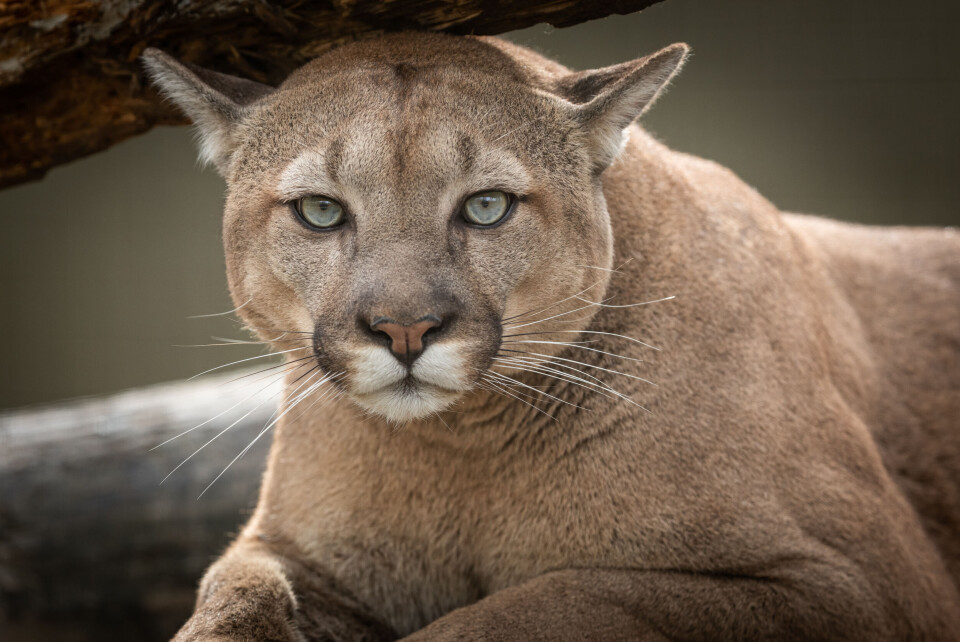-
Three departments in France on alert for flooding on Easter Monday
Storms cut electricity to 1,100 homes in Dordogne
-
Approval of roadside noise cameras in France will see fines issued against loud vehicles
The devices known as meduses already exist in several cities but so far have only been ‘instructional’
-
White storks make strong return in France via nest ‘platforms’ and clipped wings
The Ligue pour la Protection des Oiseaux shares the conservation challenges in saving these birds from extinction
Update: Pas-de-Calais puma can be caught, say French wildlife groups
Wildlife experts have criticised the way in which authorities have attempted to capture the animal and offered their assistance to the search operation

Animal rights organisations and wildlife experts have offered their help to authorities attempting to track and capture a wandering puma first spotted in Pas-de-Calais on Wednesday, October 13.
Local gendarmes and fire and rescue crews have been unable to catch the big cat, which has been sighted near the villages of Auxi-le-Château and Ligny-sur-Canche.
This is in large part due to the swiftness of the cat’s movements, as well as its ability to camouflage itself in woodland and its nocturnal nature.
On Monday, Pas-de-Calais’ prefecture authorised the shooting of the animal if it could not be caught.
Read more: Petition condemns decision to shoot puma on loose in north France
“Leaving an animal like this to roam could prove dangerous to the populations of surrounding communities,” the prefecture said in a statement.”This is why [the prefect] has decided to authorise [...] the shooting of any animal which could be a big cat [...] until October 29.
“No person or organisation has contacted the authorities to report the disappearance of an animal of this kind. We therefore have no information on its age, its temperament or how it might react to contact with humans.”
This prompted the launch of a petition calling for “justice and respect” for the puma, which has collected 52,000 signatures since the weekend.
#PasdeCalais @Prefet62 : #Justice et respect pour le #puma Auxilois - Signez la pétition ! ➡️https://t.co/lMQmZrnuny via @ChangeFrance
— Alliance des Opposants à la Chasse (@FranceAOC) October 18, 2021
Le puma est 1 animal solitaire qui vit en #Amérique, que fait-il en #France ?
Il n'est sûrement pas responsable...#biodiversite #OFB #nature
The president of animal rights group FreeLife told Franceinfo that: “We understand that this is a situation which could prove dangerous, and that things could go wrong if [the cat] approaches a house, but before thinking about killing it we must try every other alternative.
“We are prepared to tell [the authorities] about previous captures in France, in Africa and in the US, where pumas live in the wild.
“Each situation is different but it is possible to catch a wild animal.”
Julie Lasne, who is a conservationist, ranger and member of the anti-hunting organisation Alliance des opposants à la chasse, said that: “The prefect is saying that the only solution is to shoot at the [animal], because the vet does not know what to do.
“French vets are obviously not experts in wild animals, especially when they are not endemic to the country.
“A vet says that one must be within 20 metres [of the animal] to shoot a hypodermic needle. As a ranger I say ‘well yes, and?’
“They wouldn’t be able to do it because they are not in the habit but it is completely doable.
“They have no understanding of the characteristics and character of this animal. Otherwise they would not have started with the helicopter and the whole armada.
“If you lose a cat, you go and look for it when it is calm, and definitely in the evening. If you arrive with lots of noise and torches the animal will hide; it will be terrified!
“We can offer people who specialise in tracking animals, with an aptitude for reading the traces they leave. With this knowledge, we should be able to capture it.”
Ms Lasne also pointed out that if the animal is an undeclared pet, it may have had its claws removed, which would greatly reduce the risk it poses to humans. The presence or absence of claws can be revealed by the way the cat walks.
In any case, the puma is very unlikely to attack a person, according to Ms Lasne. “For a puma, we do not represent prey. If a human finds itself in [the cat’s] way and tries to stroke it [for example], there is obviously a risk, but if you keep clear of wild animals nothing will happen [to you].”
Ms Lasne believes that the puma could have been imported from Russia, and that its owner has not obtained authorisation.
Related stories
Search intensifies for ‘big cat’ spotted near villages in north France
New French anti animal mistreatment law to be discussed in Senate
























